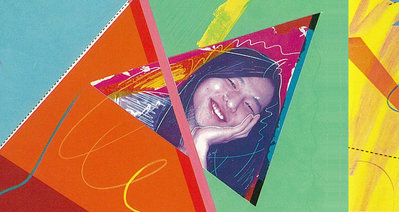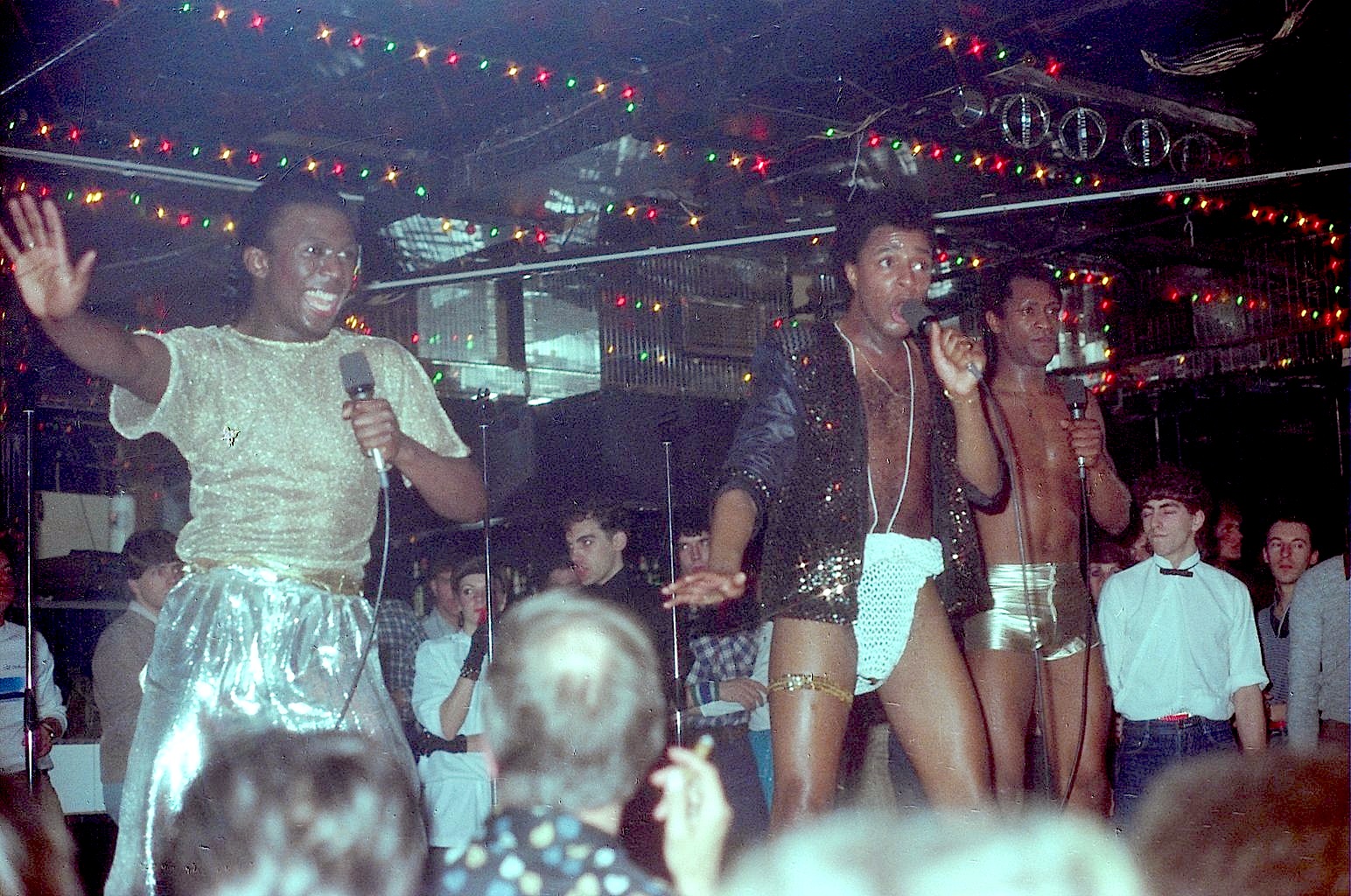Quebec AOR Funk
David Cantin runs down a list of funky, forgotten records
Looking back at Québec’s French-speaking musical legacy at the end of the ’70s, folk singer-songwriters (known regionally as “chansonniers”) and more progressive rock-oriented bands like Harmonium are the types of music that come to mind most readily. There was also the Montréal disco phenomenon, with producers such as Gino Soccio gaining international recognition. The city exemplified a whole movement with its world-renowned “discothèques” (Lime Light), DJs (Robert Ouimet) and musicians (Pierre Perpall).
So how does a blend of boogie, AOR, funk, bossa nova and modern soul emerge in the harsh cold winters of a province, so far removed from any kind of laid back, palm tree-lined landscape? A track called “Je reviens” (“Coming Back”) by a forgotten artist named Gilles Rivard and featured on Brazilian singer Ed Motta’s 2014 AOR Mix (for Wax Poetics) got many diggers wondering if Québec had more of its own brand of mid-tempo funk.
In the last couple of years, AOR compilations on labels such as BBE, Favorite Recordings and Heavenly Sweetness hand-picked artists from Québec’s late ’70s, early ’80s era. Selectors, from Zaf Chowdhry and Mark Taylor (Americana Rock Your Soul on BBE) to Pascal Rioux (AOR Global Sounds on Favorite), even seemed to make sure most of the tracks were completely lost gems. Who actually remembers the names Gilles Rivard or Dwight Druick in Québec these days?
Here are ten records that are ripe for rediscovery. They each pull just enough disco into their AOR molds to create that unique brand of Québécois laid back groove that’s currently on the radar of collectors and DJs worldwide.
Jean-Pierre Ferland - Thrilladelphia (Danse, Danse, Danse)/Pas Maintenant
Jean-Pierre Ferland is a musical icon in Québécois culture. In 1970, he released “Jaune,” which is often considered Québec’s answer to Sgt. Pepper’s Lonely Hearts Club Band. Produced by jazz musician, audio engineer and studio owner André Perry, that concept album elevated pop to another level with a more experimental approach to composition. Five years later, with Perry still at his side, Ferland came up with “Thrilladelphia (Danse, Danse, Danse),” a single that was mainly influenced by the then-popular Philadelphia soul sound.
The B-side is an instrumental track (“Pas Maintenant”) that would also appear on a library music album called USA - Philly Disco Club (under the name “Disco Ooh…”), produced by Dave Sarkys, André Perry and J.W. Brokensmith. It’s straight up funk. Both these songs are truly different and remain outliers in Ferland’s entire repertoire. The story begins here, at a time when Québec was trying to get its groove moving.
Boule Noire - Les Années Passent
When it comes to disco, funk or even reggae music in Québec, Georges Thurston (also known as Boule Noire) is a key figure. His popular single “Aimer d’amour” would introduce disco to a wider French-speaking audience by 1978, but two years later his second album Les Années Passent hinted at an interest in a more laid back, soulful approach. Working with the famous Muscle Shoals Rhythm Section, a group of studio musicians who played on “Mustang Sally” and “Respect,” Thurston’s sophomore effort offered a hybrid that brought the American R&B influence into a full-blown Québécois context. There’s dancefloor numbers like “Loin d’ici,” but also the more stripped-down production on tracks like “Sexy Lady.” He would later on play an influential role in Dwight Druick’s French rendition of Toto’s AOR hit “Georgy Porgy.”
Luc Cousineau - Luc Cousineau
The wonderfully breezy “Vaya Mulata” was featured on Zaf Chowdhry and Mark Taylor’s excellent 2013 compilation Americana 2 : Rock Your Soul (BBE), drawing more attention to this self-titled private-press album by singer-songwriter Luc Cousineau. The “chanson” (“Vivre en amour”) that closes off the record is a well-known folk anthem in Québec, more traditional than the rest of this mostly instrumental album. With influences that range from Brazilian music to light jazz and funk, it’s unlike anything else in Cousineau’s entire discography. Arrangements were handled by Jimmy Tanaka (who would later work with Patsy Gallant, Gino Soccio and even Wilson Pickett). He drew widely from approaches used for library music and film soundtracks. A year later, a young female singer by the name of Diane Tell would also imbue a bossa nova flavor to her songs before becoming one of Québec’s most popular acts.
Organisation C - Viens Tourner
This album is so unique, from the kitschy, awkward cover art to the music itself. A holy grail among rare disco-funk private press LPs, Organisation C was put together by producer Claude Blouin, released on the independent Clau-Ver label and featured a young Johanne Blouin on vocals. More successful as a solo artist in the late ’80s, Johanne Blouin was married to Normand Brathwaite, who was responsible for the 1983 Québécois synth pop hit “Larmes de métal” with his band Soupir. Songs like “Tout ce que tu es pour moi” and “Yukön” are tropical disco at its finest. Even more surprising, some of Organisation C’s slower material actually sounds like some sort of early canvas of easy-listening Space Age Bachelor Pad Music. Claude Blouin would later play with international stars such as Michel Legrand, Tom Jones and Tony Bennett.
Robert Charlebois - Solide
While trying to reinvent himself after playing an important role in the late ’60s psychedelic rock revolution in Québec (as well as in Europe), Robert Charlebois needed to try something new on “Solide.” Here, he draws inspiration from the popular soft rock and blue-eyed soul of the California coast. With the help of famously reclusive author Réjean Ducharme writing the lyrics and guitarist Jean-Marie Benoît as musical director (who would later play on Dwight Druick’s “Tanger” and Gilles Rivard’s “En Couleurs”), there’s a sense of humor and playfulness here that didn’t muster the same reaction from his fanbase as his older material. Nevertheless, cuts like “ J’t’haïs” and “Superficielle” work with a smooth funky hybrid that occasionally pays off on an otherwise uneven album. His laidback look on the cover says it all.
Minuit - Minuit
Montréal native Dwight Druick was the one that pushed the classic AOR sound to the fullest in Québec. He first did so in 1979 with bandmates Minuit, but returned to it again a year later on his own solo effort. Raised in Belgium, there’s to this day very little information about Druick himself apart from this short musical career, and then working with rock songwriter Aldo Nova in the mid-’80s.
Minuit’s opening track “Il faut recommencer” is a disco boogie highlight that blends itself with poignant ballads and a soft rock feel close to Boz Scaggs along the way. Interestingly, the album was recorded in Montréal’s Studio Six, Son Québec and the Muscle Shoals Sheffield studio in Alabama. This is especially relevant in the Southern soul influence that runs throughout the album. Boule Noire didn’t play on the record, but would become an important contributor to Druick’s next move. It should also be noted that a harder-to-find English version of this record came out under the name Midnight.
Dwight Druick - Tanger
When record collector Ed Motta included “Prends ton temps” on his second AOR Mix for Wax Poetics (2014), Dwight Druick’s “Tanger” once again gained the attention it had only previously garnered in Japan. An incredible album from start to finish, it brings to mind some of Steely Dan’s finest work, covering everything from light jazz fusion to funk, with touches of slower-paced disco as well. Druick first released a French version of Toto’s hit single “Georgy Porgy” with an impressive cast of studio musicians (including Georges Thurston and Jean-Marie Benoît’s slick guitar work). Warner Bros. even put out a promo 12-inch in France, with Prince’s “I Wanna Be Your Lover” on the A-side. It didn’t fit anywhere among Fiori-Séguin’s grandiose prog-rock (“Deux Cents Nuits À L’Heure”) or Paul Piché’s common man folklore, which were the popular staples of that period.
Diane Tell - En Flèche
Before heading back to Paris in 1983 to pursue a career there, Diane Tell was one of Québec’s most successful and talented singers. Her lush use of R&B, funk and Latin rhythms made her an immediate star. Her third record, called En Flèche is perhaps her finest moment, including popular romantic ballads like “Si j’étais un homme” and “Je suis en amour” (which found its way onto Charles Maurice’s AOR Global Sounds (1977-1982) compilation for Favorite Recordings in 2015). Drummer Willie Hall of the Stax-Volt Recording Section, as well as Allan Katz and Carl Marsh on arrangements, is part of what gives this record its perfectionist signatures. With a strong, funky bassline courtesy of Uzeb’s Alain Caron, “Miami” celebrates the kind of carefree lifestyle that became a trademark of the late ’70s. This is also a fairly easy dollar-bin find in Québec’s flea markets.
Gilles Rivard - En Couleurs
Maybe the most significant record on this list, “En Couleurs” has been rediscovered by a whole new generation of listeners on an international scale in the last few years. “Je reviens” made it on Ed Motta’s essential first AOR Mix for Wax Poetics, and GUTS & Mambo of Parisian label Heavenly Sweetness chose to include this tropical chill-out gem on the third volume of the Beach Diggin’ series.
It’s worth noting that Gilles Rivard’s brand of AOR-modern soul involved, once again, guitarist Jean-Marie Benoît, Jimmy Tanaka on percussion (who played with Diane Tell) and Daniel Barbe on synthesizer (also featured on “Tanger”). “Entre parenthèses” mixes jazz with a bossa nova sensibility that’s close to Diane Tell, but is also similar to American artists like Ned Doheny or Lee Ritenour. The whole record explores the idea of getting away to some warmer, isolated location, somewhere close to Brazil. Rivard unfortunately passed away in 1991 due to cancer at the early age of 42, after releasing seven albums between 1975 and 1985.
Toulouse - Trois Dimensions
This last record seems to close off an era to make way for the synth pop explosion of the ’80s that would shortly prevail. With singers like Patsy Gallant, Nanette Workman and Chatelaine all embracing the disco craze, this vocal trio also caused a real stir for doing a dance version of Robert Charlebois’ famous ’60s song, the psychedelically oriented “Lindberg.” In 1976, they even released an album with Boule Noire called Potion Magique.
It’s no suprise Trois Dimensions starts off with Thurston’s catchy single “C’est toujours comme ça l’amour,” which appears on Favorite Recording’s French Disco Boogie Sounds compilation. “Tendre doux” is also all about the open harmonies, that are deeply rooted in African-American music. Toulouse sounded as good as any disco act at the time. They were even asked to record some of their songs in English for an album called Dangerous Ladies in 1980. This was their swan song, and an overall softer touch on Trois Dimensions seemed to point out that disco was slowly fading, with pop music on its way to rule the charts all over.

